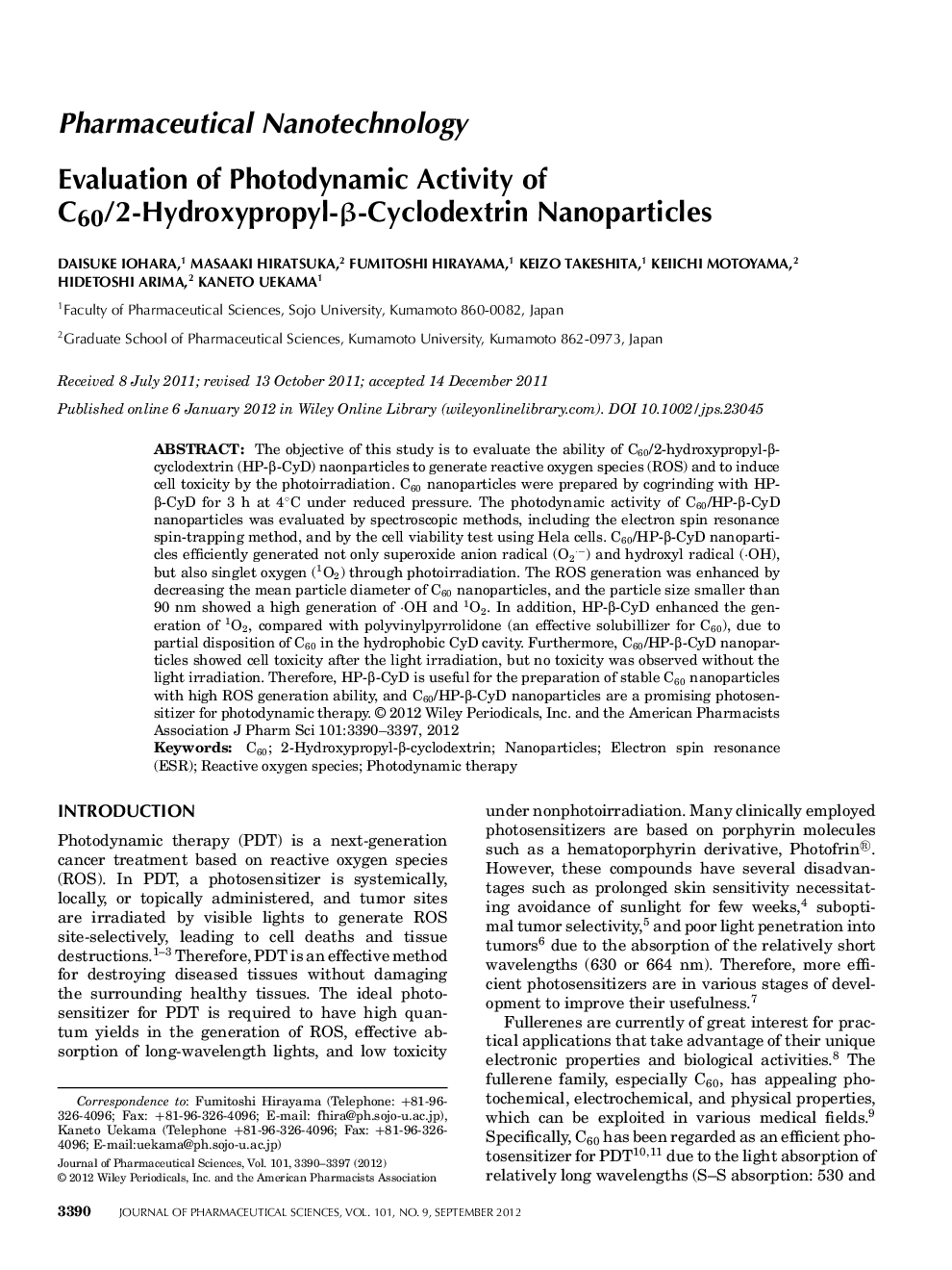| Article ID | Journal | Published Year | Pages | File Type |
|---|---|---|---|---|
| 2485958 | Journal of Pharmaceutical Sciences | 2012 | 8 Pages |
ABSTRACT:The objective of this study is to evaluate the ability of C60/2-hydroxypropyl-β-cyclodextrin (HP-β-CyD) naonparticles to generate reactive oxygen species (ROS) and to induce cell toxicity by the photoirradiation. C60 nanoparticles were prepared by cogrinding with HP-β-CyD for 3 h at 4°C under reduced pressure. The photodynamic activity of C60/HP-β-CyD nanoparticles was evaluated by spectroscopic methods, including the electron spin resonance spin-trapping method, and by the cell viability test using Hela cells. C60/HP-β-CyD nanoparticles efficiently generated not only superoxide anion radical (O2·−) and hydroxyl radical (·OH), but also singlet oxygen (1O2) through photoirradiation. The ROS generation was enhanced by decreasing the mean particle diameter of C60 nanoparticles, and the particle size smaller than 90 nm showed a high generation of ·OH and 1O2. In addition, HP-β-CyD enhanced the generation of 1O2, compared with polyvinylpyrrolidone (an effective solubillizer for C60), due to partial disposition of C60 in the hydrophobic CyD cavity. Furthermore, C60/HP-β-CyD nanoparticles showed cell toxicity after the light irradiation, but no toxicity was observed without the light irradiation. Therefore, HP-β-CyD is useful for the preparation of stable C60 nanoparticles with high ROS generation ability, and C60/HP-β-CyD nanoparticles are a promising photosensitizer for photodynamic therapy. © 2012 Wiley Periodicals, Inc. and the American Pharmacists Association J Pharm Sci 101:3390–3397, 2012
